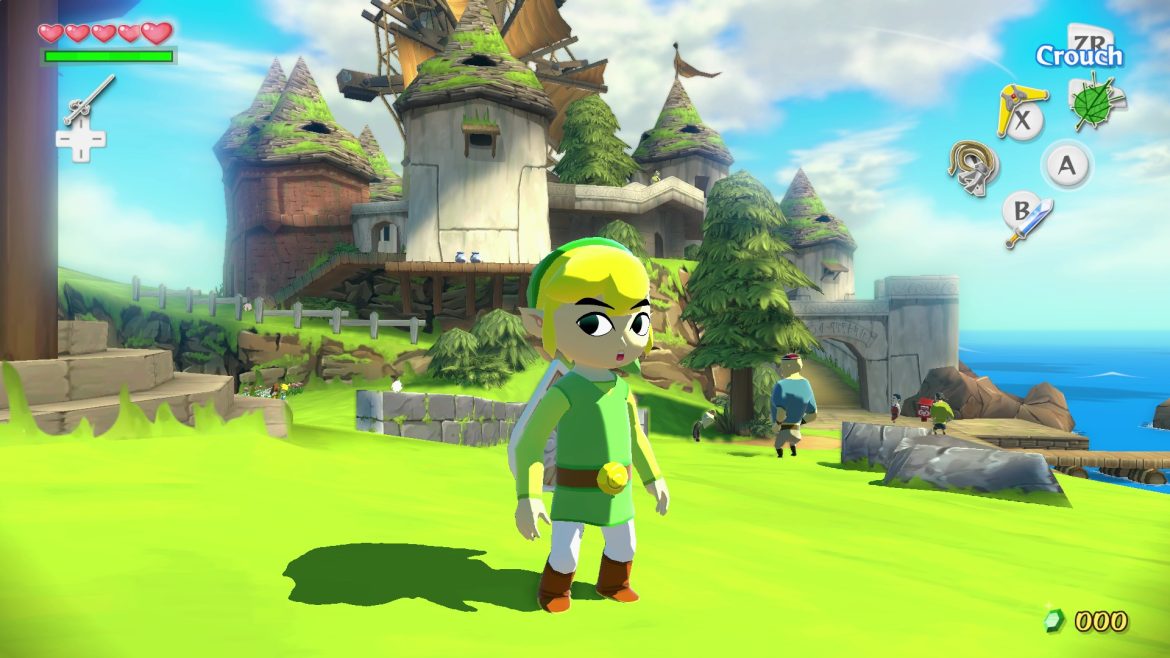TL;DR
Wind Waker HD on Wii U is a gorgeous, upgraded version of a classic Zelda adventure. It retains the original's charming cel-shaded art and accessible gameplay but streamlines some of the slower elements, like sailing, and adds missing dungeons. The Wii U GamePad integration enhances navigation, making this remaster a joy to play. Even with minor aging, it's a masterclass in game design that holds up incredibly well. If you missed it before or want to relive the magic, this HD remake is a must-play. Discover why this seafaring adventure remains a timeless masterpiece!
Nintendo demonstrates their mastery of game design with Wind Waker, a title that remains one of the finest adventure games, even if time has left some minor imperfections.
For us, The Legend of Zelda: Wind Waker stands as one of the best adventures of the past decade. Its distinctive cel-shaded graphics on the GameCube were visually captivating. Considering the game’s comprehensive design, encompassing environments and boss encounters, we even consider it a potential contender for the best Zelda game of all time, rivaling A Link to The Past.
Now, Nintendo revisits this classic on the Wii U, presenting a high-resolution 1080p version with new content. The question is: is this upgrade worthwhile for GameCube owners, and can it serve as a catalyst for the Wii U’s resurgence? Continue reading to find out…
In Wind Waker, players assume the role of a young boy living in the era “after the great hero.” On his birthday, he receives the hero’s iconic green tunic, sword, and shield. The only missing element is a princess to rescue, and predictably, this sets the stage for the adventure that is The Wind Waker. This marks the first instance of series creator Shigeru Miyamoto entrusting the project to another director, with Eiji Aonuma capably helming the development.
Wind Waker (WW) boasts an exceptional art style, a compelling atmosphere, and a remarkably accessible gameplay loop. Players control their hero in a free-roaming 3D world. Beginning on a childhood island, the protagonist is soon drawn into adventure by setting sail on the enchanted boat. The game evolves into a maritime exploration, where players engage in battles against colossal octopuses and unearth hidden treasures, all facilitated by the Wii U controller’s touch screen. This enhances the gameplay experience compared to the original GameCube version. While the game is compatible with the Controller Pro for a more traditional feel, the map displayed on the Wii U GamePad offers a significant advantage, making it our recommended control scheme.
Overall, the enhancements implemented by Nintendo in this classic feel well-considered. The original release was criticized for lacking some dungeons, and two of these dungeons have been reintroduced in this version. Additionally, the sailing mechanics, while charming on the GameCube, could be time-consuming, particularly during the late-game TriForce shard quest. This aspect has been streamlined; for instance, players can now acquire fast sails, and the final quest has been reduced from eight to a more manageable three pieces. These represent just a few of the subtle improvements that contribute to a smoother gameplay experience while preserving the core essence of the original.
Wind Waker’s strength lies in its distinct approach. In an era often defined by extensive cut-scenes featuring well-known voice actors and pre-rendered sequences, Wind Waker maintains its simplicity. The game relies primarily on text and music, allowing players to interpret character voices and actions. While this approach might be perceived as old-fashioned, it provides a refreshing alternative for those who appreciate creative interpretation and wish to engage their imaginations.
The HD remaster is excellent, transforming the game into an aesthetic showcase. While some elements, such as certain animations, may exhibit signs of limited updating, the overall result is a more visually refined and fluid experience.
Nintendo deserves commendation for their work on Wind Waker HD. Ultimately, raw processing power and resolution specifications cannot replace exceptional gameplay. Wind Waker excels as a game. The value of the upgrade will depend on individual preferences, but those who have never experienced The Wind Waker on the GameCube should acquire it for the Wii U. This title defined a generation, and upon playing it, you will understand its enduring impact.


